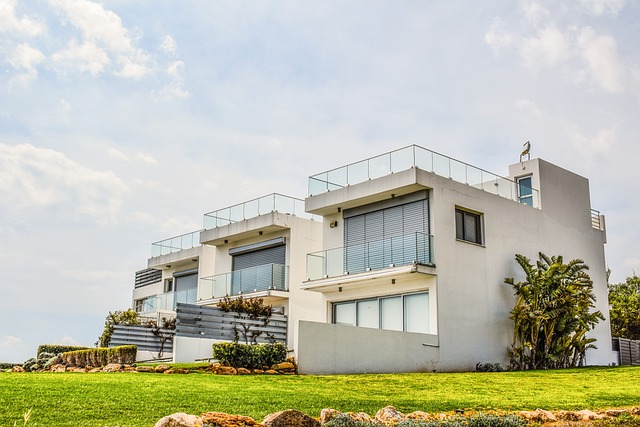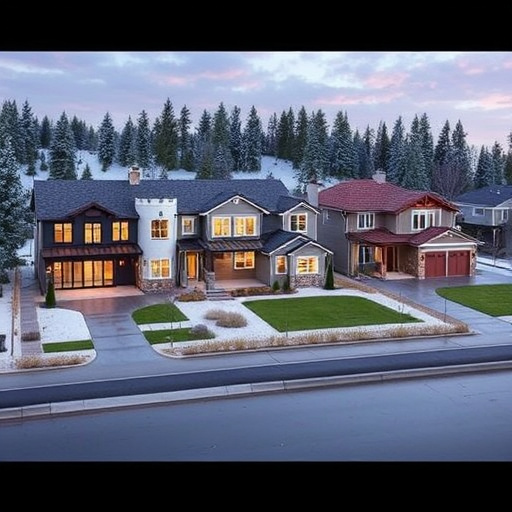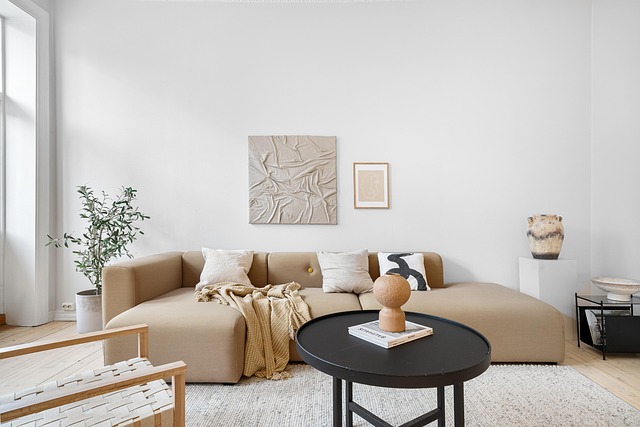Real estate choices significantly impact sustainability, influencing environmental health and societal well-being. Adopting energy-efficient design, green materials, water conservation, and access to public transport can reduce footprints and enhance occupant health. Evaluating green building certifications like LEED or BREEAM ensures properties meet environmental standards, boosting value and attracting eco-conscious buyers/renters. Integrating renewable energy sources, water conservation strategies, and sustainable interior design further increases property desirability and value. Sustainable real estate choices offer long-term financial benefits, reduced operational costs, and enhanced comfort while preserving resources and promoting a healthier environment.
Integrating sustainability into real estate choices is no longer an option but a necessity. With the built environment accounting for significant global emissions, understanding the impact of our decisions is crucial. This article explores strategies to make informed choices, from evaluating green building certifications and adopting renewable energy solutions to implementing water conservation and smart interior design. We’ll delve into the long-term benefits, demonstrating that sustainable real estate isn’t just eco-friendly but also financially rewarding.
- Understanding the Impact of Real Estate on Sustainability
- Evaluating Green Building Certifications and Standards
- The Role of Renewable Energy in Property Decisions
- Incorporating Water Conservation Strategies
- Smart Choices for Sustainable Interior Design
- Long-Term Benefits: Financial and Environmental Return on Investment
Understanding the Impact of Real Estate on Sustainability
Real estate choices have a significant impact on sustainability, often with far-reaching environmental and social implications. The construction and management of buildings contribute to greenhouse gas emissions, resource depletion, and waste generation. Moreover, poorly designed or maintained structures can lead to energy inefficiencies, increasing the strain on local infrastructure and ecosystems. Understanding these impacts is crucial for making informed decisions that promote sustainable practices within the industry.
By integrating sustainability into real estate choices, we can mitigate these challenges. This involves considering factors like energy-efficient design, green building materials, water conservation measures, and access to public transportation. Such approaches not only reduce environmental footprints but also enhance the health and well-being of occupants while potentially increasing property values over time.
Evaluating Green Building Certifications and Standards
When considering real estate, evaluating green building certifications and standards is a crucial step in making sustainable choices. These certifications provide assurance that a property has been designed and constructed with environmental considerations in mind, offering long-term benefits for both occupants and the planet. Look out for recognized labels such as LEED (Leadership in Energy and Environmental Design), BREEAM (Building Research Establishment Environmental Assessment Method), or local equivalents, which assess criteria like energy efficiency, water conservation, material selection, and indoor air quality.
Incorporating green building standards into real estate choices not only reduces environmental impact but also enhances property value and attracts eco-conscious tenants or buyers. These certifications can lead to lower operating costs, improved occupant health and productivity, and better long-term investment returns. By understanding the nuances of these standards, individuals can make informed decisions that contribute to a more sustainable future in the real estate sector.
The Role of Renewable Energy in Property Decisions
In today’s world, where sustainability is at the forefront of many industries, real estate choices are no exception. The integration of renewable energy sources into property decisions is becoming increasingly prevalent and for good reason. By embracing technologies such as solar panels, wind turbines, or geothermal heating systems, both homeowners and commercial property owners can significantly reduce their carbon footprint and contribute to a greener future. This shift towards renewable energy in real estate not only benefits the environment but also offers long-term financial advantages, as these systems can lead to substantial savings on energy bills over time.
When evaluating choice real estate, it’s crucial to consider the potential for integrating renewable energy solutions. Properties with already existing renewable energy setups or those located in areas conducive to such installations can be highly desirable. This trend is not only a responsible step towards sustainability but also a strategic investment, as governments and organizations worldwide are increasingly promoting and incentivizing eco-friendly practices, making these properties more attractive and potentially increasing their long-term value.
Incorporating Water Conservation Strategies
In today’s world, where water scarcity is becoming an increasingly pressing issue, incorporating water conservation strategies in real estate choices is more vital than ever. Sustainable buildings and properties are designed with features like efficient plumbing systems, low-flow fixtures, and rainwater harvesting systems that significantly reduce water consumption. These practices not only contribute to preserving this precious resource but also offer long-term cost savings for homeowners and businesses alike.
When considering a choice in real estate, it’s essential to look beyond the aesthetics and location of a property. Evaluating its water conservation measures can have a profound impact on both environmental sustainability and economic viability. By embracing these strategies, we not only ensure responsible stewardship of natural resources but also create more resilient and efficient living and working spaces.
Smart Choices for Sustainable Interior Design
When it comes to real estate choices, sustainable interior design is a smart and increasingly popular trend. Integrating eco-friendly practices doesn’t just benefit the environment; it also enhances property values and appeals to prospective tenants or buyers who prioritize sustainability. One of the first steps towards this goal is selecting materials that are locally sourced, recycled, or made from sustainable resources like bamboo or reclaimed wood, reducing the carbon footprint associated with transportation.
Moreover, smart lighting solutions, such as LED fixtures, and energy-efficient appliances can significantly cut down utility costs and consumption. Incorporating natural light through well-placed windows and skylights not only reduces electricity usage but also creates a healthier living environment. Additionally, using low-VOC (volatile organic compound) paints and non-toxic cleaning products contributes to better air quality indoors, making these spaces more comfortable and safer for occupants.
Long-Term Benefits: Financial and Environmental Return on Investment
Making sustainable choices in real estate isn’t just a trend; it’s a smart, long-term strategy. Properties with eco-friendly features and designs tend to have higher resale values and lower operational costs over time. This translates into significant financial returns for investors and homeowners alike. Beyond financial gains, sustainability also brings environmental benefits. By choosing energy-efficient appliances, renewable energy sources, and green building materials, we reduce our carbon footprint and contribute to a healthier planet. These sustainable practices not only preserve natural resources but also create more comfortable living spaces, as many eco-friendly features enhance air quality and temperature regulation.
When considering real estate investments, looking at the bigger picture—the long-term financial and environmental payoff—is crucial. Sustainable choices can attract tenants or buyers who value eco-conscious properties, further ensuring a stable rental income or sale price. Moreover, governments and organizations increasingly offer incentives for sustainable building practices, providing additional financial benefits to those who integrate these principles into their real estate decisions.
Integrating sustainability into real estate choices is not just a trend but a necessary step towards a greener future. By understanding the environmental impact of property decisions, evaluating green certifications, considering renewable energy options, implementing water conservation, and smart interior design, investors can make informed choices that benefit both their wallets and the planet in the long term. Embracing sustainable practices in real estate isn’t just an option; it’s a responsible and lucrative path forward.



